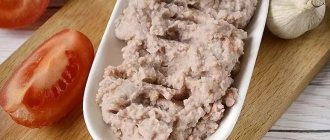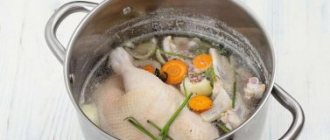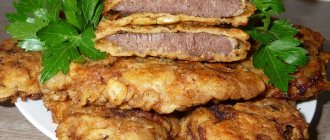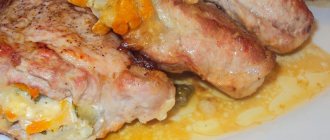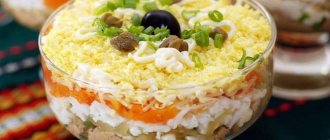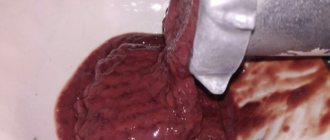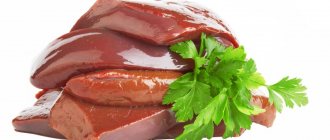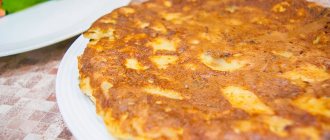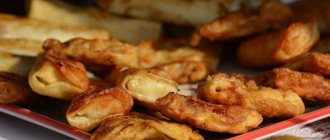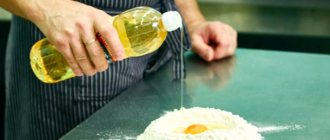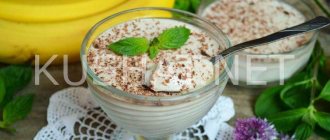Do you like snacking, but think it's not healthy? A dish called “Turkey Pate” will help dispel this myth. By spreading this pate in a thin layer on a piece of toast, bread or diet bread, you will receive that necessary charge of useful energy that is so necessary.
This dish is a kind of lifesaver, as it is quite universal, easy to prepare and can fill some gaps in the menu. It can be consumed not only as a snack, but also as one of the breakfast options or as an addition to the main course.
Let's find out how to make turkey pate at home and choose the right one in the store.
What is turkey pate?
The homeland of the pate is still unknown, since two countries are fighting for this right: France and Germany. It is also known that the first pate was made from goose liver, and it was invented in the 18th century. Initially, the dish was served only to royal families, but later this delicacy became available to ordinary people.
Pate is a substance made from ground meat or offal. Adding vegetables or herbs enriches the taste. In post-Soviet countries, liver pate is considered the most popular, and absolutely any liver is used.
Turkey pate is prepared in three ways: from meat, from liver, or a mixture of these two components. In addition to the main ingredient, carrots, onions, zucchini, herbs, milk or butter are used. For a homogeneous mass, it is twisted several times in a meat grinder or whipped with a blender. To make the taste of the pate more refined, you can add wine or nuts to it.
Store-bought turkey pate may contain turkey liver and meat, as well as a host of other completely unhealthy ingredients, including: stabilizers, starch, dyes, soy and flavor enhancers.
Useful and harmful properties of turkey pate
Turkey meat is considered a very healthy and dietary product. Nutritionists especially recommend it to people suffering from various diseases of the gastrointestinal tract and diabetics. Turkey meat is also useful for small children as a first complementary food and during periods of active growth.
The liver also contains amino acids, a large group of vitamins and collagen, which are so necessary for the full functioning of the body.
Unfortunately, industrial pates, which stores offer us in a wide range, cannot be called useful. It is quite difficult for an ordinary person to determine the composition of turkey pate by eye, so there are special laboratories to determine the quality of the product and, unfortunately, the results are mostly disappointing. They sometimes contain ingredients that are not listed on the package.
Some pate recipes contain lard. Manufacturers argue that real pate should be fatty. People with gastroenterology problems should use this pate especially carefully. Fatty foods, even in small quantities, can cause discomfort in the gastrointestinal tract.
Eating pate with baked goods may not have a very good effect on your figure. Using black bread or bread made from whole grain flour will help to minimize the calorie content of this dish; diet bread is also suitable.
Recipe for Turkey meat pate. Calorie, chemical composition and nutritional value.
Nutritional value and chemical composition of “Turkey meat pate”.
The table shows the nutritional content (calories, proteins, fats, carbohydrates, vitamins and minerals) per 100 grams of edible portion.
| Nutrient | Quantity | Norm** | % of the norm in 100 g | % of the norm in 100 kcal | 100% normal |
| Calorie content | 247.8 kcal | 1684 kcal | 14.7% | 5.9% | 680 g |
| Squirrels | 11.6 g | 76 g | 15.3% | 6.2% | 655 g |
| Fats | 21.8 g | 56 g | 38.9% | 15.7% | 257 g |
| Carbohydrates | 1.3 g | 219 g | 0.6% | 0.2% | 16846 g |
| Organic acids | 0.1 g | ~ | |||
| Alimentary fiber | 0.6 g | 20 g | 3% | 1.2% | 3333 g |
| Water | 64.1 g | 2273 g | 2.8% | 1.1% | 3546 g |
| Ash | 0.337 g | ~ | |||
| Vitamins | |||||
| Vitamin A, RE | 220.7 mcg | 900 mcg | 24.5% | 9.9% | 408 g |
| Retinol | 0.006 mg | ~ | |||
| beta carotene | 1.296 mg | 5 mg | 25.9% | 10.5% | 386 g |
| Vitamin B1, thiamine | 0.021 mg | 1.5 mg | 1.4% | 0.6% | 7143 g |
| Vitamin B2, riboflavin | 0.096 mg | 1.8 mg | 5.3% | 2.1% | 1875 |
| Vitamin B4, choline | 61.23 mg | 500 mg | 12.2% | 4.9% | 817 g |
| Vitamin B5, pantothenic | 0.292 mg | 5 mg | 5.8% | 2.3% | 1712 g |
| Vitamin B6, pyridoxine | 0.103 mg | 2 mg | 5.2% | 2.1% | 1942 |
| Vitamin B9, folates | 0.818 mcg | 400 mcg | 0.2% | 0.1% | 48900 g |
| Vitamin C, ascorbic acid | 0.63 mg | 90 mg | 0.7% | 0.3% | 14286 g |
| Vitamin E, alpha tocopherol, TE | 0.529 mg | 15 mg | 3.5% | 1.4% | 2836 g |
| Vitamin H, biotin | 0.159 mcg | 50 mcg | 0.3% | 0.1% | 31447 g |
| Vitamin K, phylloquinone | 1.5 mcg | 120 mcg | 1.3% | 0.5% | 8000 g |
| Vitamin RR, NE | 4.9727 mg | 20 mg | 24.9% | 10% | 402 g |
| Niacin | 2.939 mg | ~ | |||
| Macronutrients | |||||
| Potassium, K | 112.5 mg | 2500 mg | 4.5% | 1.8% | 2222 g |
| Calcium, Ca | 15.22 mg | 1000 mg | 1.5% | 0.6% | 6570 g |
| Silicon, Si | 2.528 mg | 30 mg | 8.4% | 3.4% | 1187 g |
| Magnesium, Mg | 13.86 mg | 400 mg | 3.5% | 1.4% | 2886 g |
| Sodium, Na | 9.68 mg | 1300 mg | 0.7% | 0.3% | 13430 g |
| Sera, S | 150.94 mg | 1000 mg | 15.1% | 6.1% | 663 g |
| Phosphorus, Ph | 98.3 mg | 800 mg | 12.3% | 5% | 814 g |
| Chlorine, Cl | 14.95 mg | 2300 mg | 0.7% | 0.3% | 15385 g |
| Microelements | |||||
| Aluminium, Al | 55.5 mcg | ~ | |||
| Bor, B | 31.1 mcg | ~ | |||
| Vanadium, V | 8.66 mcg | ~ | |||
| Iron, Fe | 0.788 mg | 18 mg | 4.4% | 1.8% | 2284 g |
| Yod, I | 0.61 mcg | 150 mcg | 0.4% | 0.2% | 24590 g |
| Cobalt, Co | 7.6 mcg | 10 mcg | 76% | 30.7% | 132 g |
| Lithium, Li | 0.525 mcg | ~ | |||
| Manganese, Mn | 0.0352 mg | 2 mg | 1.8% | 0.7% | 5682 g |
| Copper, Cu | 63.12 mcg | 1000 mcg | 6.3% | 2.5% | 1584 g |
| Molybdenum, Mo | 7.588 mcg | 70 mcg | 10.8% | 4.4% | 923 g |
| Nickel, Ni | 0.73 mcg | ~ | |||
| Rubidium, Rb | 34.5 mcg | ~ | |||
| Selenium, Se | 0.081 mcg | 55 mcg | 0.1% | 67901 g | |
| Strontium, Sr | 0.76 mcg | ~ | |||
| Fluorine, F | 6.93 mcg | 4000 mcg | 0.2% | 0.1% | 57720 g |
| Chromium, Cr | 2.61 mcg | 50 mcg | 5.2% | 2.1% | 1916 |
| Zinc, Zn | 1.3958 mg | 12 mg | 11.6% | 4.7% | 860 g |
| Digestible carbohydrates | |||||
| Starch and dextrins | 0.031 g | ~ | |||
| Mono- and disaccharides (sugars) | 1.4 g | max 100 g | |||
| Glucose (dextrose) | 0.432 g | ~ | |||
| Sucrose | 1.136 g | ~ | |||
| Fructose | 0.25 g | ~ | |||
| Essential amino acids | 0.068 g | ~ | |||
| Arginine* | 0.783 g | ~ | |||
| Valin | 0.612 g | ~ | |||
| Histidine* | 0.354 g | ~ | |||
| Isoleucine | 0.632 g | ~ | |||
| Leucine | 1.043 g | ~ | |||
| Lysine | 1.076 g | ~ | |||
| Methionine | 0.327 g | ~ | |||
| Methionine + Cysteine | 0.407 g | ~ | |||
| Threonine | 0.58 g | ~ | |||
| Tryptophan | 0.217 g | ~ | |||
| Phenylalanine | 0.528 g | ~ | |||
| Phenylalanine+Tyrosine | 0.936 g | ~ | |||
| Nonessential amino acids | 0.143 g | ~ | |||
| Alanin | 0.804 g | ~ | |||
| Aspartic acid | 1.329 g | ~ | |||
| Hydroxyproline | 0.117 g | ~ | |||
| Glycine | 0.748 g | ~ | |||
| Glutamic acid | 2.182 g | ~ | |||
| Proline | 0.546 g | ~ | |||
| Serin | 0.487 g | ~ | |||
| Tyrosine | 0.408 g | ~ | |||
| Cysteine | 0.081 g | ~ | |||
| Sterols (sterols) | |||||
| Cholesterol | 102.34 mg | max 300 mg | |||
| Saturated fatty acids | |||||
| Saturated fatty acids | 5.9 g | max 18.7 g | |||
| 12:0 Lauric | 0.013 g | ~ | |||
| 14:0 Miristinovaya | 0.211 g | ~ | |||
| 15:0 Pentadecane | 0.019 g | ~ | |||
| 16:0 Palmitinaya | 5.216 g | ~ | |||
| 17:0 Margarine | 0.045 g | ~ | |||
| 18:0 Stearic | 1.629 g | ~ | |||
| 20:0 Arakhinovaya | 0.013 g | ~ | |||
| Monounsaturated fatty acids | 10.621 g | min 16.8 g | 63.2% | 25.5% | |
| 16:1 Palmitoleic | 1.501 g | ~ | |||
| 17:1 Heptadecene | 0.032 g | ~ | |||
| 18:1 Oleic (omega-9) | 10.769 g | ~ | |||
| 20:1 Gadoleic (omega-9) | 0.149 g | ~ | |||
| Polyunsaturated fatty acids | 3.101 g | from 11.2 to 20.6 g | 27.7% | 11.2% | |
| 18:2 Linolevaya | 3.729 g | ~ | |||
| 18:3 Linolenic | 0.159 g | ~ | |||
| 20:4 Arachidonic | 0.026 g | ~ | |||
| Omega-3 fatty acids | 0.1 g | from 0.9 to 3.7 g | 11.1% | 4.5% | |
| Omega-6 fatty acids | 2.9 g | from 4.7 to 16.8 g | 61.7% | 24.9% |
The energy value of Turkey meat pate is 247.8 kcal.
- Serving = 5 g (12.4 kcal)
Primary Source: Created in the application by the user. Read more.
** This table shows the average levels of vitamins and minerals for an adult. If you want to know the norms taking into account your gender, age and other factors, then use the “My Healthy Diet” application.
How to choose turkey pate in the store
When you don’t have time to cook at home or have difficulties purchasing high-quality raw materials for making turkey pate, this dish can easily be bought in any store or large supermarket.
When choosing such an industrial product, you need to be extremely careful. Experts in the field of consumer protection recommend paying special attention to 3 things:
- compound;
- best before date;
- color and consistency.
Depending on which turkey pate is purchased, meat or liver, meat or liver should always come first, and their share should be at least 50%. Next comes fat; in a good and high-quality product its content should not exceed 25%. The remaining quarter comes from vegetables, root vegetables, grains and seasonings. If the composition contains other ingredients in the form of soy and starch, such a pate should be avoided.
It is also worth paying attention to the manufacturing rules. It is better to give preference to those brands that are manufactured in accordance with GOST, as there is less chance of running into solid fat in the composition.
The expiration date for turkey pate varies from person to person. The packaged pate by weight will not be stored for very long. Its optimal shelf life is no more than 30 days. If the expiration date on such a pate is more than 1 month, then you should not purchase it. This indicates the presence of a huge amount of preservatives.
Turkey meat or liver pate, which is sold in tin or glass containers, has a longer shelf life: 1 year for glass and 2 years for tin. As with loose pate, if the shelf life exceeds the standards, it is better to discard such pate.
When purchasing a product in a tin or closed package, it is difficult to determine its color and consistency. Therefore, the control check will take place directly at home. A good quality pate should always have a grayish tint, whether it is made from meat or liver; if its color is too pink or brown, this indicates the presence of dyes in it. The consistency of industrial pate in a jar is always uniform, without separation or fatty layers.
Making a classic turkey liver pate
No matter how delicious store-bought pate is, homemade pate is always tastier, and besides, you choose its ingredients. The simplest and most budget-friendly option for turkey pate is the classic liver pate. It's quite simple to prepare and you only need a few ingredients:
- turkey liver - 500 g;
- carrots - 2 large root vegetables;
- onion - 3 large heads.
Preparation:
- First, wash the liver and cut it into medium-sized pieces. To give the offal a more delicate texture or taste, you can soak it in milk for several hours.
- Meanwhile, cut the onion and carrots into cubes.
- Fry one at a time in a small amount of vegetable oil. It is better to take oil without a pronounced taste.
- Add the liver to the vegetables fried until half cooked, cover with a lid and simmer until cooked. Halfway through the process, salt and pepper the dish to taste.
- Cool the finished liver and vegetables slightly and puree using a blender bowl or grind several times in a meat grinder.
- Pour 50 grams of melted butter into the prepared mass.
The pate is ready.
Turkey liver appetizer at home
Turkey meat is popular because it is dietary and also very healthy, so the pate turns out tender and tasty. There are many different recipes for making turkey liver pate at home. To prepare a snack, vegetables and liver can be fried or boiled, as desired.
The recipe will require the following ingredients:
- Turkey liver – 800 gr.
- Onion head.
- Carrot.
- Salt, spices to taste.
- Vegetable and butter - 40 g each.
Turkey liver pate is prepared quickly at home; it can be placed on a holiday table or left as a snack. In a short period of time you get a very tender snack. To get the most dietary dish possible, it is recommended to boil the product; in this form it contains much less fat.
Cut the turkey liver into small pieces and fry in heated vegetable oil. Peel the carrots, onions, chop and fry in vegetable oil until completely cooked. Place vegetables, as well as pieces of liver, a small amount of butter, spices and salt into a blender bowl. Grind all the ingredients until smooth and put it in another form. Place in the refrigerator for several hours to allow the pate to set. This turkey liver appetizer is a great addition to any meal.
Storing and eating ready-made pate
Homemade turkey pate does not last long. No more than 7 days. But, as a rule, the dish is very tasty and is eaten much faster.
If you want to prepare homemade pate for future use, then this can be easily done. Place the pate into pre-sterilized jars and refrigerate. The shelf life of this pate is up to a month.
Opened store-bought pate can be stored for no more than 3 days in the refrigerator.
The finished pate can be eaten as a spread on a sandwich, or as a filling for various tartlets, pies and pancakes. You can stuff mushroom caps with turkey meat pate and bake them with cheese in the oven or use them as a filling for eggs or vegetable rolls made from eggplant and zucchini.
Turkey pate with “hops”
- 1 kg of offal;
- 2 onions;
- 2 carrots;
- 200 g butter;
- 1 tbsp. l. cognac;
- sugar;
- salt;
- 1 tbsp. l. vegetable oil;
- a glass of milk.
How to cook.
- First you need to prepare the liver: wash it well, remove the blood vessels. Leave in milk for 30 minutes.
- Wash the peeled onions and carrots and cut into strips. Fry in vegetable oil.
- While the vegetables are fried, rinse the liver from milk with water and cut into small pieces. Place in a frying pan with fried onions and carrots. Salt and pepper the ingredients as desired. Add your favorite spices to taste.
- Then the liver with vegetables needs to be simmered for 25 minutes. Then pour in the cognac and keep the heat on for another 5 minutes, stirring the food. This is necessary so that the alcohol evaporates from the dish, but the cognac aroma is preserved.
- Turn off the fire. Cool the food and place the warm vegetables and liver into the blender bowl. Send butter there too. Grind the ingredients to a pate consistency.
- Place the finished dish in molds and refrigerate until the mixture hardens. After two hours you can treat yourself.
